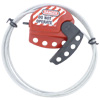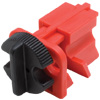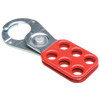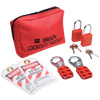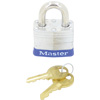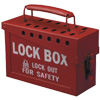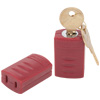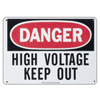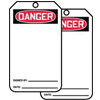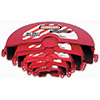Lockout/Tagout System Requirements
Serious accidents, injury, and death can occur when servicing machinery that has not been properly disconnected from its power supply. Lockout/tagout refers to specific safety practices and procedures that allow workers to ensure machinery, equipment, or systems are shut off and remain off while servicing equipment.
As part of the procedure, a designated individual turns off and disconnects the machinery or equipment from its energy source before performing service. The designated individual also either locks or tags the energy-isolating device to prevent the release of energy.
Without lockout/tagout procedures, there is a possibility the machine will activate because of stored energy or because someone turned on the machine.
What Does Lockout Mean?
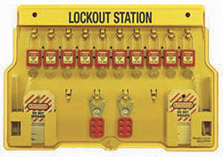
Lockout means to use an energy-isolating device on the system and physically lock the system in a safe mode.
An energy-isolating device can be any of the following:
- A manually operated disconnect switch
- A circuit breaker
- A line valve
- A block
In most cases, these devices will have loops or tabs that can be locked to a stationary item in a safe position.
What Does Tagout Mean?
Tagout is a labeling process that should be used when lockout is required. A tag or label is attached to the device being locked out.
The tagout should contain the following information:
- Why the lockout/tagout is required
- Duration that lockout/tagout will be in place
- The name of the person who attached the tag and lock to the system
Lockout/Tagout Procedures
The Occupational Safety and Health Administration (OSHA) standard 29 CFR 1910.147 addresses the practices and procedures necessary to disable machinery or equipment. If you have employees that service or maintain machines where the unexpected startup or the release of stored energy could cause injury, this standard likely applies to you.
What Employers Should Do
OSHA's standard establishes that as part of an energy-control program, employers must do the following:
- Establish energy-control procedures
- Train employees on the energy-control program
- Review procedures at least once a year to ensure that they are being followed and that they remain effective
As long as employers remain within the boundaries of the OSHA standard, they have the flexibility to develop lockout/tagout programs and procedures that meet the needs of their workplace.
What an Energy-Control Procedure Should Include
Energy-control procedures should explain to employees what they must know and do to control hazardous energy effectively. It is best to write the procedures down, make them easily accessible to employees, and use them to train employees.
The procedure must provide employees with at least the following information:
- A statement on how to use the procedures
- Steps on how to shut down, isolate, block, and secure machines
- Steps on designating the safe placement, removal, and transfer of lockout/tagout devices
- Who is responsible for the lockout/tagout devices
- Requirements for testing machines to determine and verify the effectiveness of lockout/tagout devices and other energy-control measures
Standardizing Lockout/Tagout Devices
Lockout and tagout devices come in a variety of colors, shapes, and sizes. While no specific color, shape, or size has a specific meaning, OSHA requires that lockout and tagout devices must be standardized at each facility. Consult OSHA directly for more detailed information.
Shop Lockout/Tagout Devices
NOTE: This information is a summary interpretation and was prepared as general reference material only. This summary is not authoritative as laws can be amended over time. For specific compliance requirements and updates, please refer to the actual code language and the statute or legal counsel.

